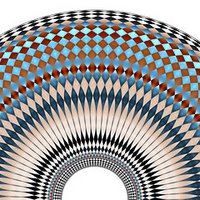Beauty in a Bottle: How Do Shampoos Work? Part 1

Let's break down the question into three parts:
This first post will define what ingredients are used in shampoos, the second part will describe how the formula is manufactured, and the third part will explain how the product actually works on hair.
Part 1: Shampoo ingredients can be broken down into the following basic categories:
Surfactants
Surfactants are the primary functional ingredients in shampoo. A surfactant is simply a type of detergent. Although sometimes surfactants are referred to as soaps, this is not exactly accurate. A soap is a special type of surfactant, but not all surfactants are soaps. Surfactants make the shampoo foam; they also dissolve grease and oil from your hair. Surfactants are commonly used in almost every type of cleansing product, from toothpaste to hand soap to body wash.
Thickeners
Shampoos are typically thickened by a reaction between the surfactants and salt. Formulators may also add special thickening agents known as polymers.
Preservatives
Preservatives are added to the formula to ensure the product doesn't become contaminated by bacteria, mold, or yeast. Common preservatives include parabens and urea derivatives.
Color
A variety of dyes maybe added to the shampoo to impart a pleasing color. In the vast majority of shampoos, the dye has no functional purpose at all - it's just there to make the shampoo look nice. There is a special sub-class of shampoos that are color-depositing. They contain special staining dies that can help give the hair a little bit of color.
Conditioning agents
A good shampoo not only cleans the hair, it moisturizes as well. The conditioning agents used in shampoos are typically polymers such as those derived from cellulose or guar, or silicones. Typically the silicone must be chemically modified to be soluble in the shampoo system. Two - in -1- shampoos have higher levels of conditioning agents so a separate rinse out conditioner is not required.
Control agents
Control agents are added to the formula to help adjust its physical properties. For example, an acid or base may be added to raise or lower the pH. Thickeners, as the name implies, control how thick or thin the product is. (The scientific term for this measurements a is "viscosity.")
Fragrance - fragrance is extremely important to a shampoo. In addition to covering the chemical odor of the product, a good fragrance support the image of the product. For example, research shows that consumers think a deep cleansing shampoo works better when it has a citrus fragrance. Moisturizing shampoos seem to condition better when they have a rich, "milky" fragrance. In future posts we'll deal with the impact of fragrances in cometics in more detail.
Featured ingredients
Marketers frequently add featured ingredients to their formulations to make them more appealing or to support to a certain marketing story. In the deep cleansing shampoo example described above, one would expect to find a citrus extracts like tangerine peel or lemon zest in the formula. While these ingredients do serve to make the product more appealing, they typically do not perform any function.

Now that you have a fundamental understanding of what goes in a shampoo, you're ready to learn about how these ingredients are put together into a finished product. Look for Part 2 of "How Are Shampoos Made" in a future post.


















<< Home